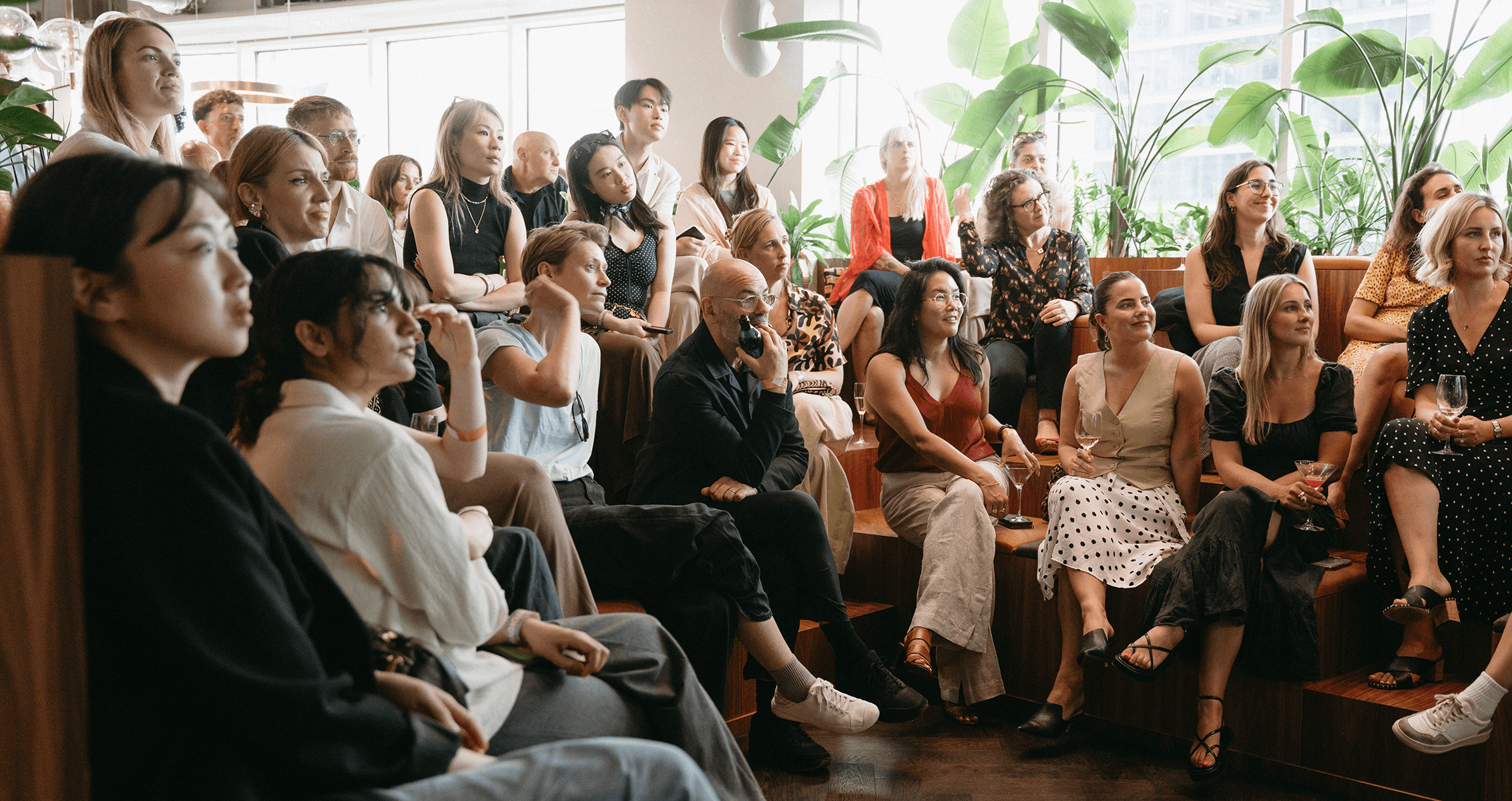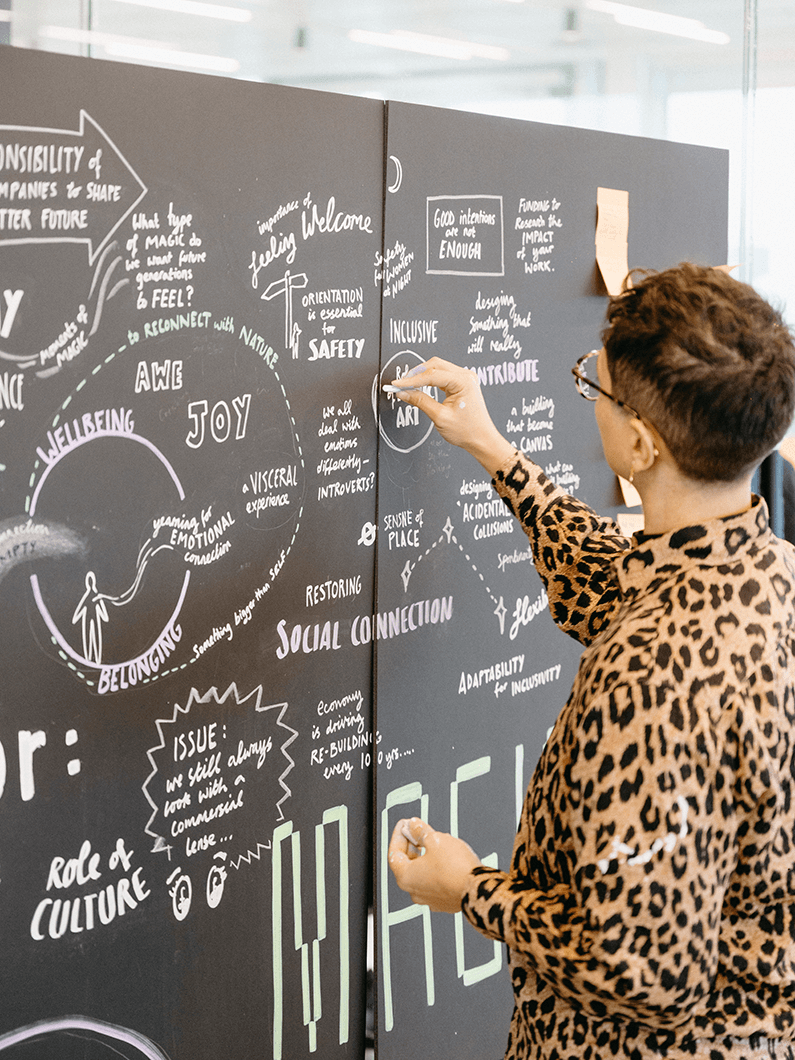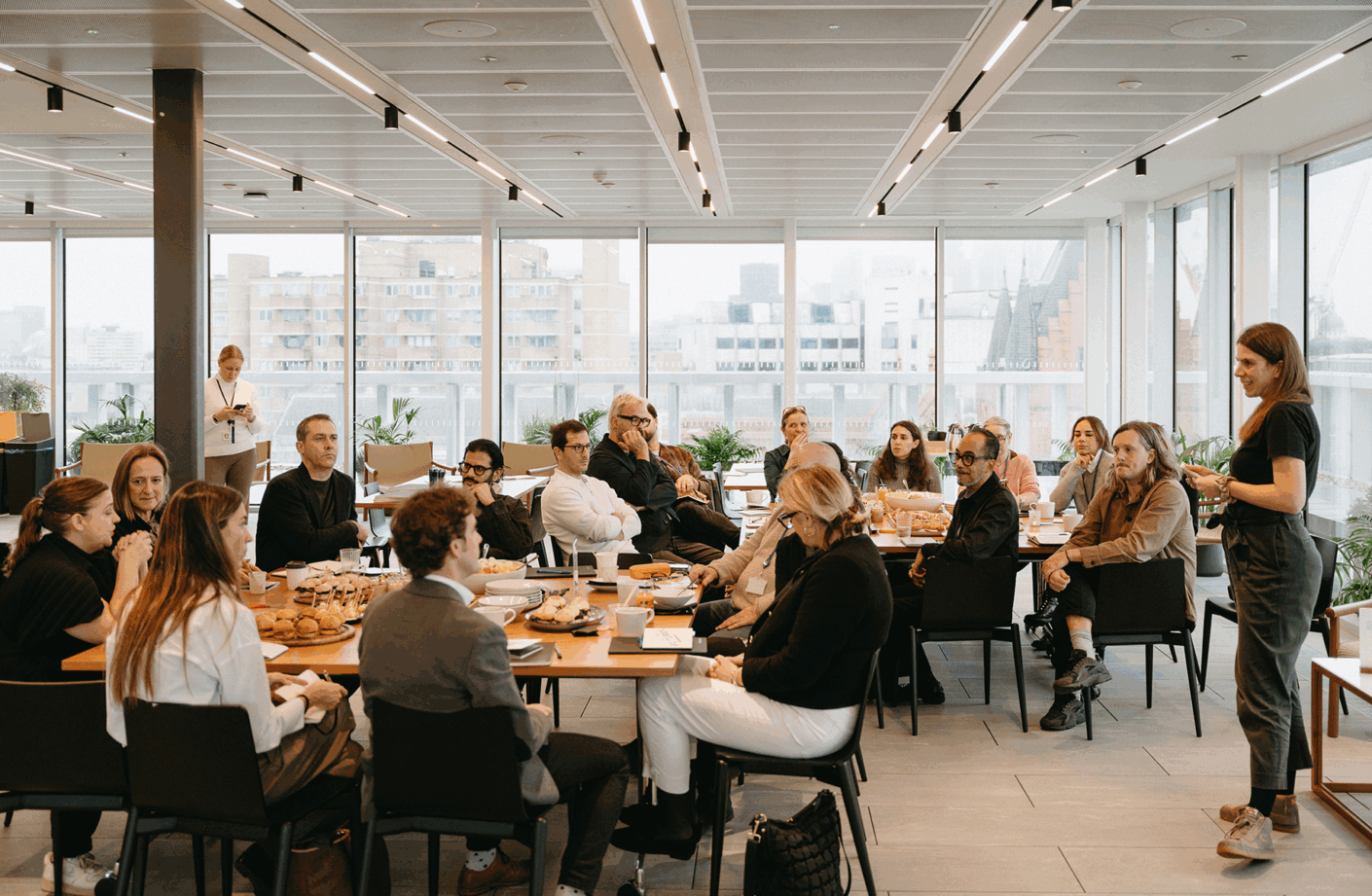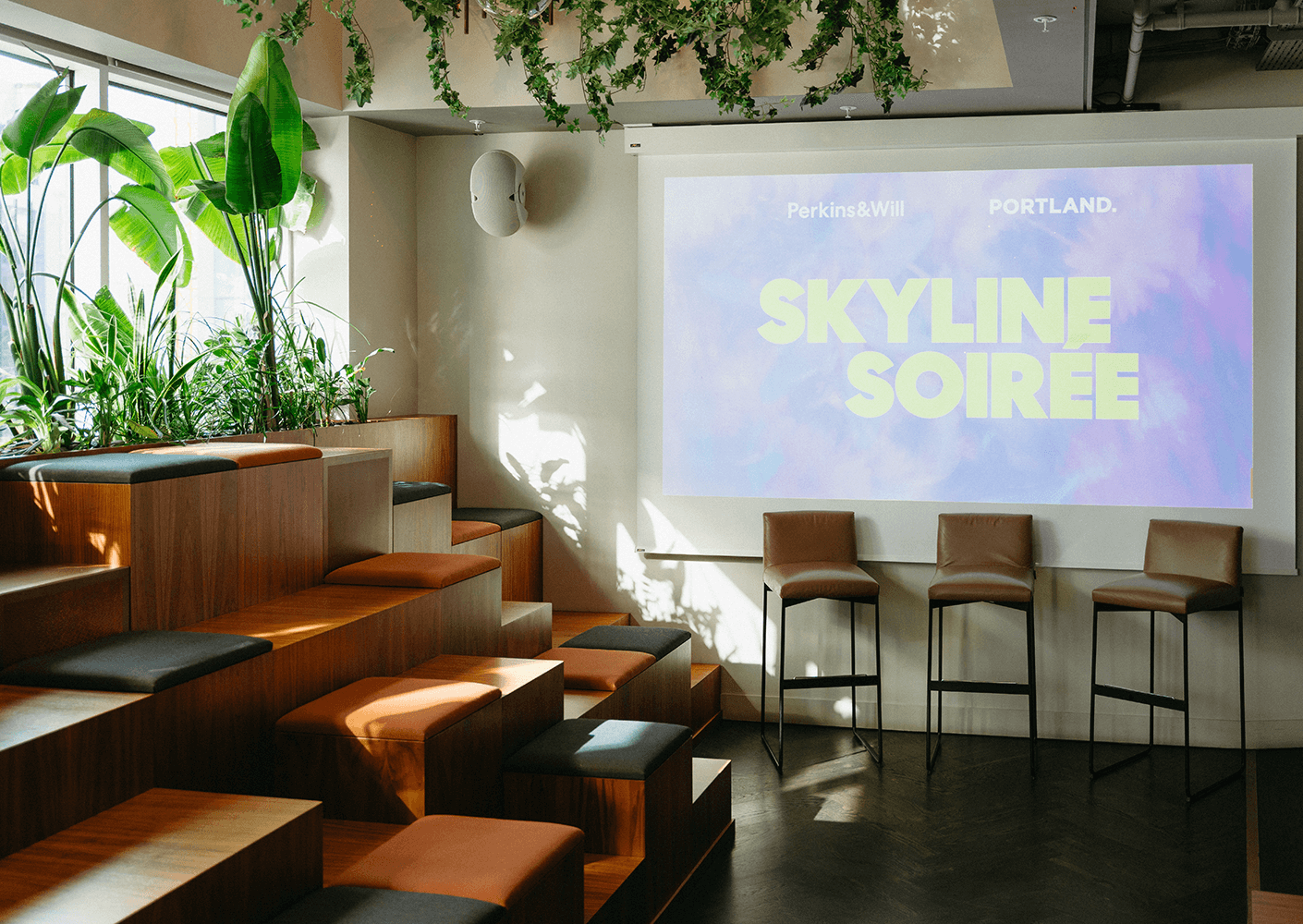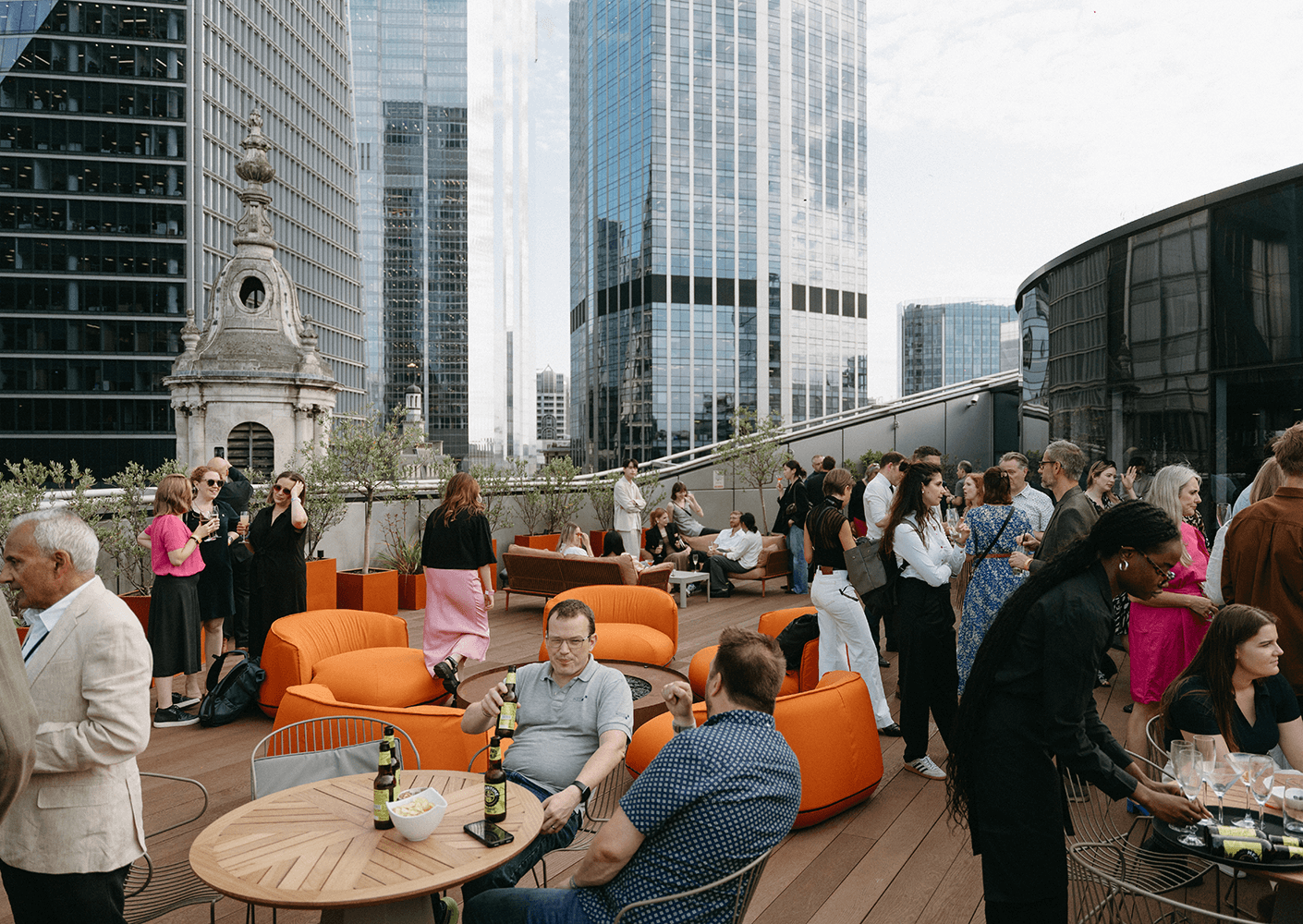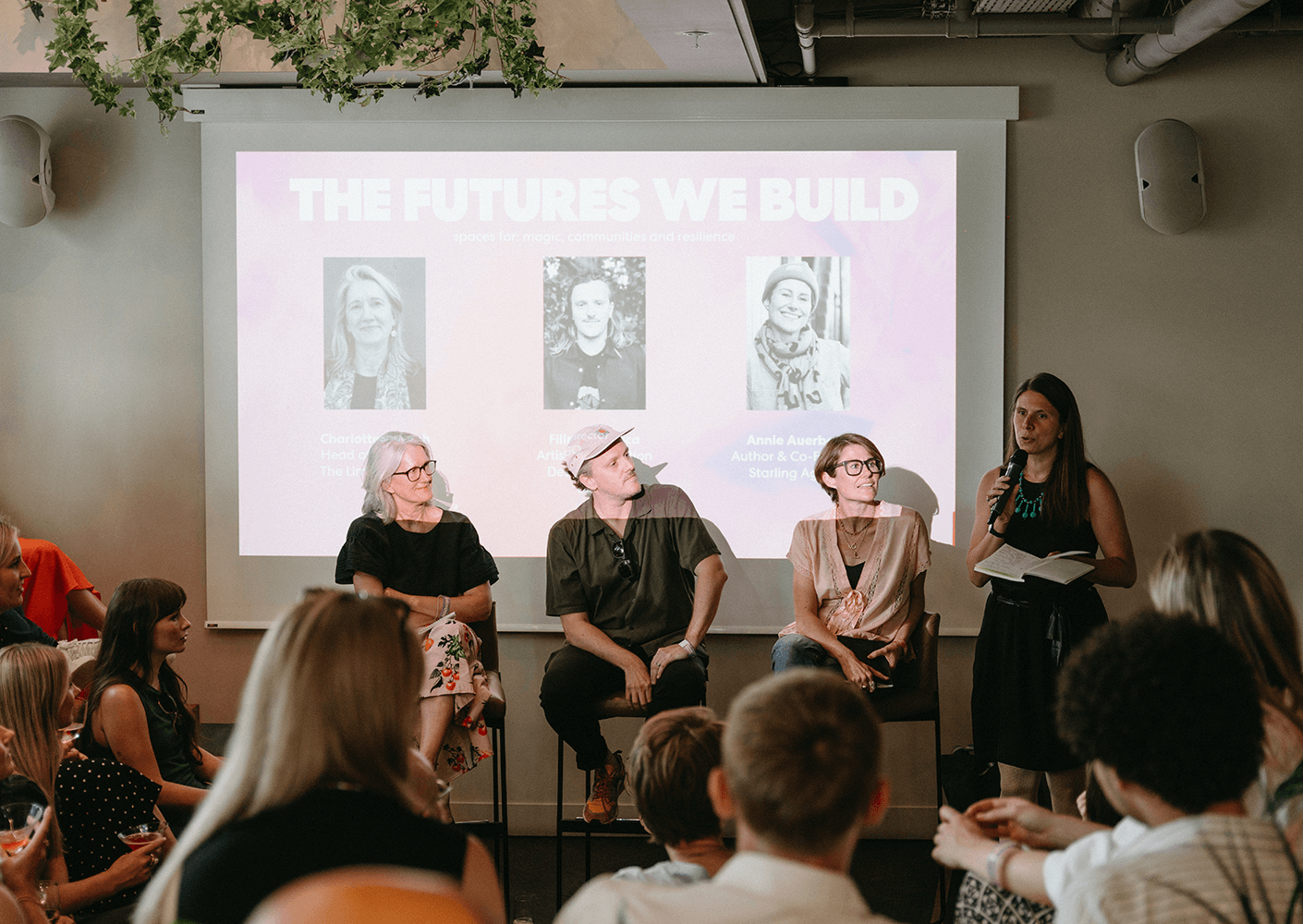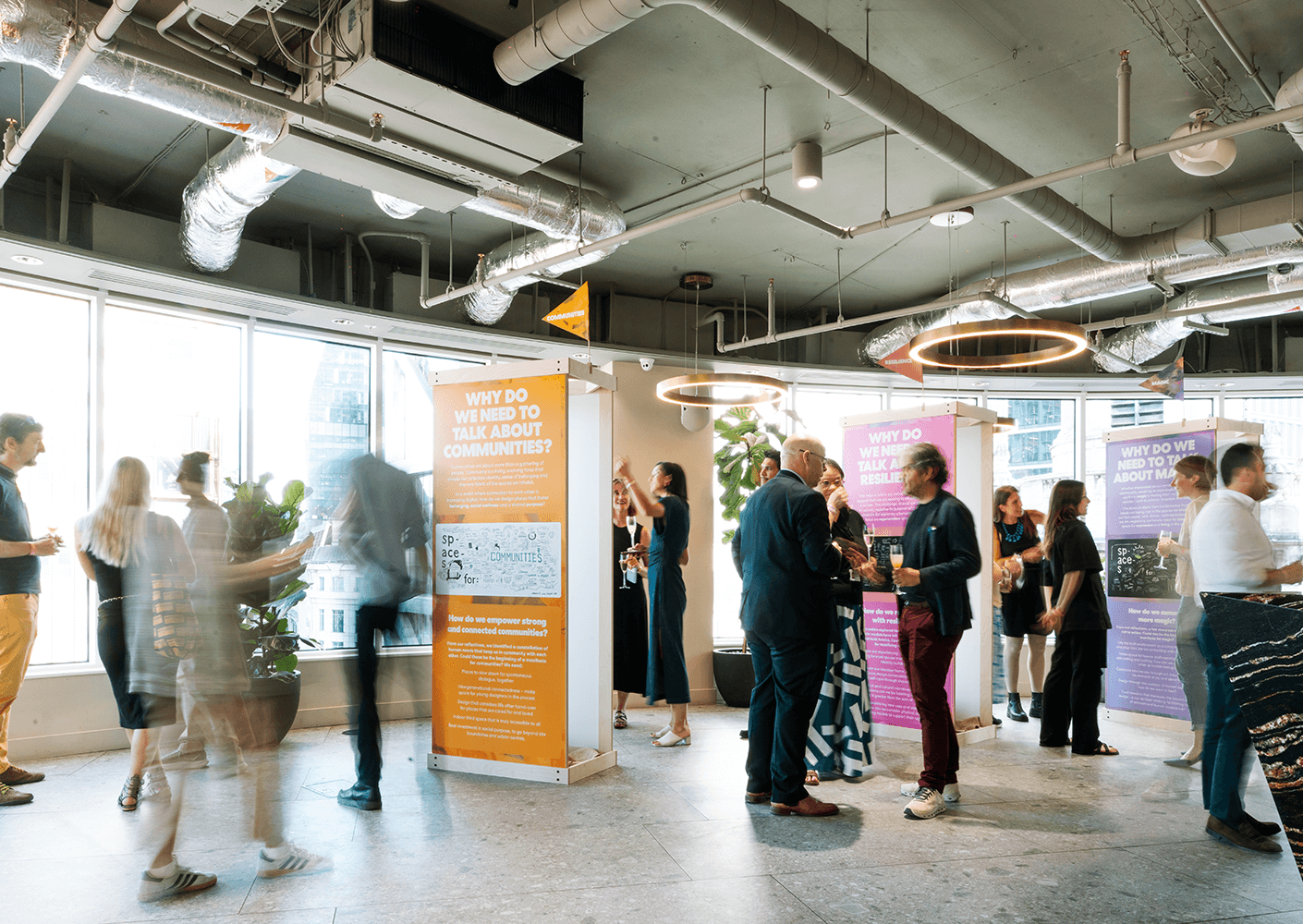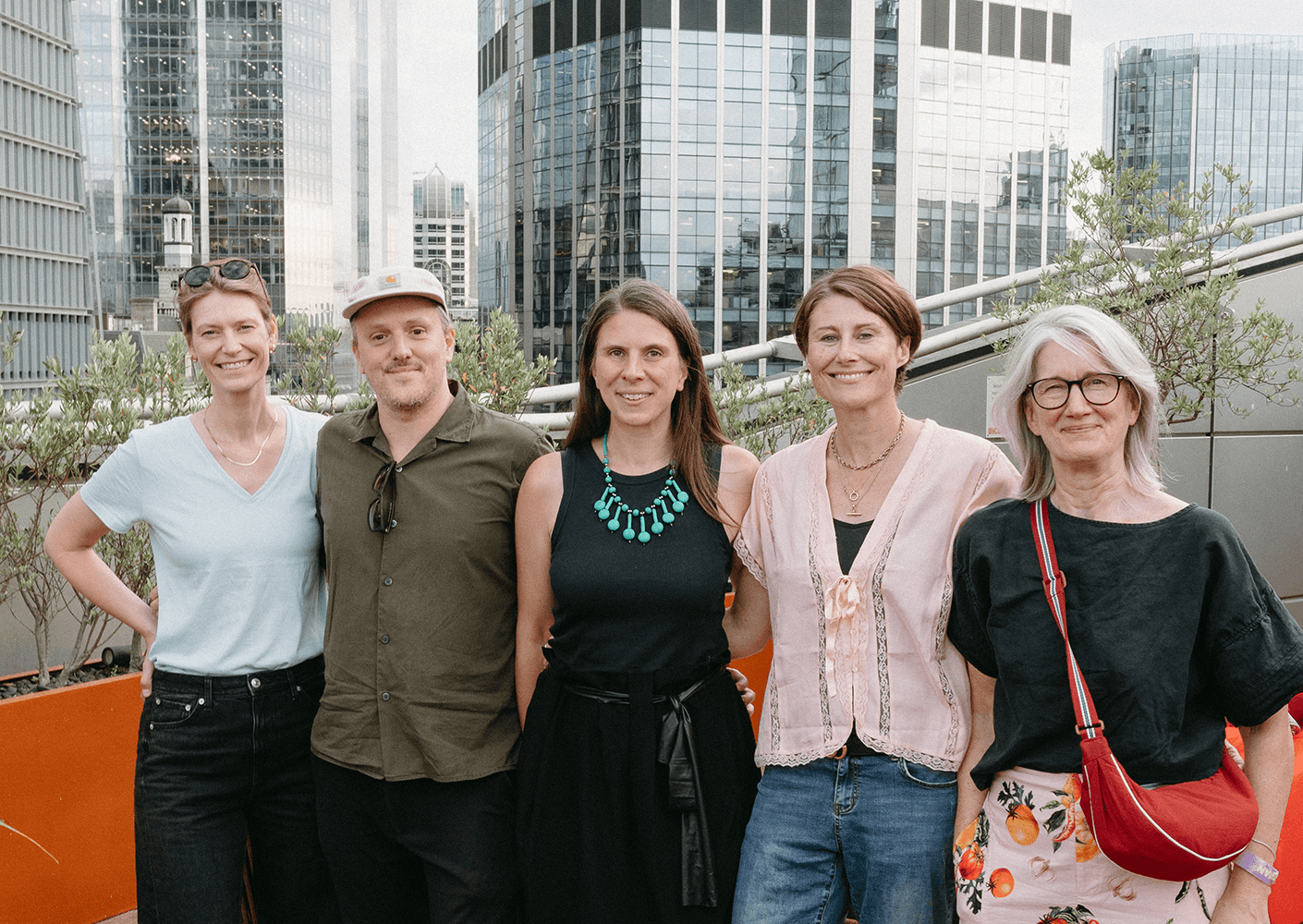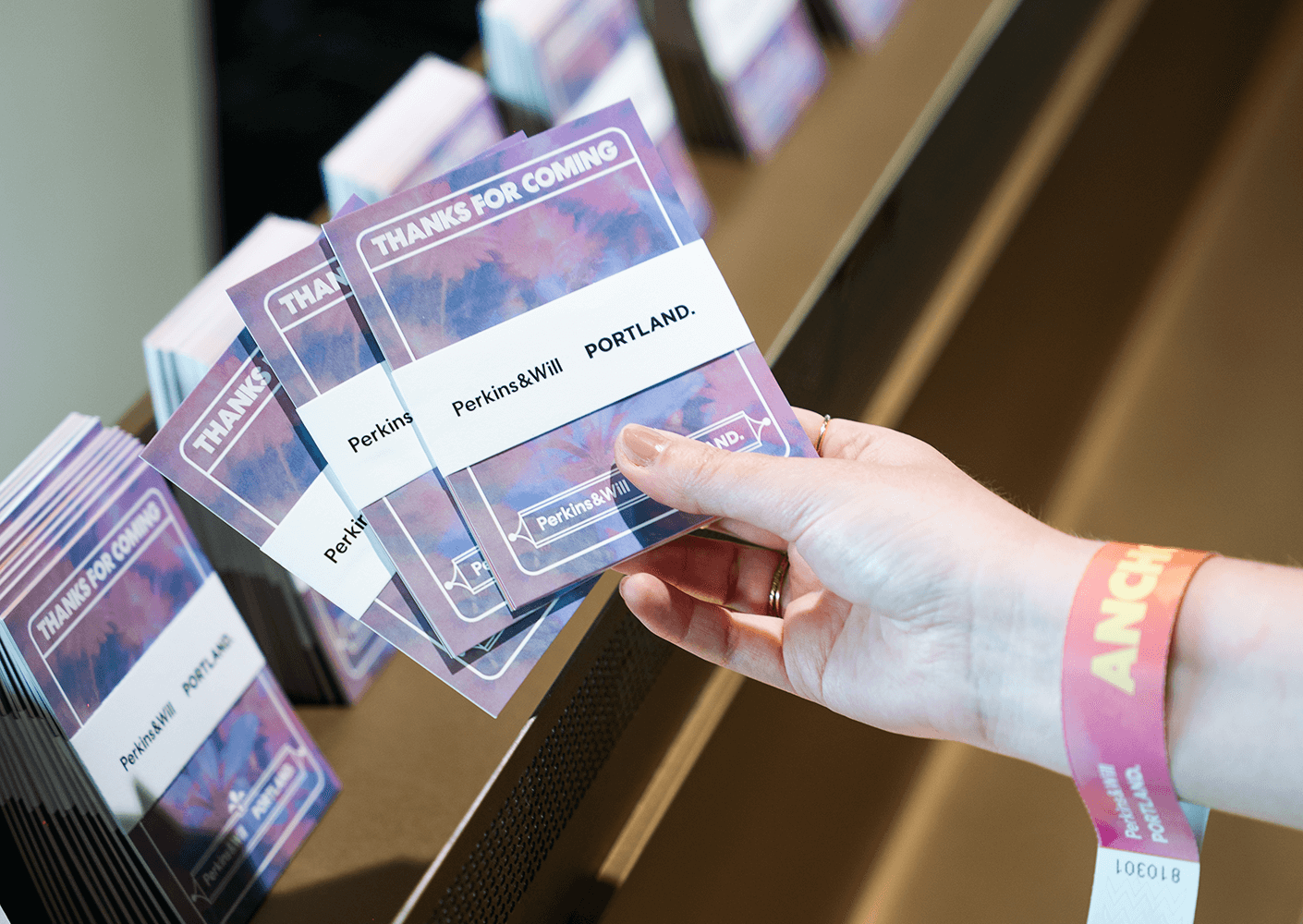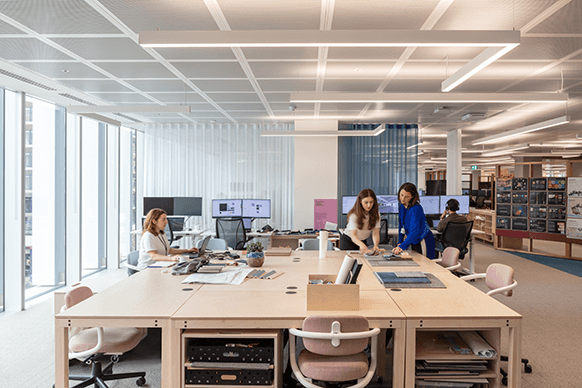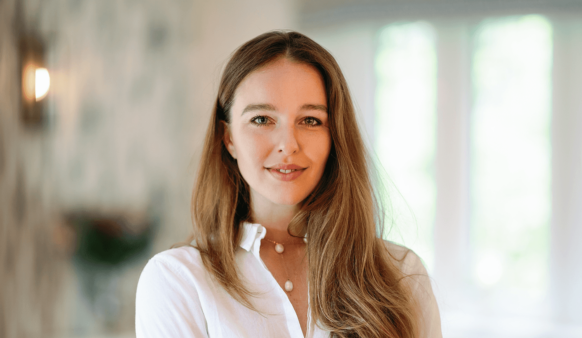The Magic We’ve Lost
As one of our special guests, Marie Stafford (Global Director at VML) powerfully reminded us: “We are living in an age of disenchantment.” Whether interpreted as connection, joy, novelty, spontaneity, or simply a space to just ‘be’, magic is missing from our built environment.
This absence stems from fundamental human needs not being met in our everyday environments. We crave emotional connections and visceral experiences, yet although digitally connected, we’re emotionally isolated. With constant stimulation, we have no space to pause or simply be bored – yet this is where magic happens. Meanwhile, distraction and busyness are rewarded while we’ve forgotten how to truly engage with the now, losing our capacity for presence and wonder.
Creating Magic: Four Key Principles
Design as catalyst for human connection: Thoughtful design can ignite imagination and wonder, serving as a powerful “play starter” that brings people together. As Filippo Cuttica, Interaction Design Director at LEGO emphasised during the roundtable, architecture should spark creativity and unexpected encounters.
Prioritise experience and agency: Create spaces that give people freedom to carve their own desire paths while ensuring everyone feels safe and included. We can’t experience magic if we don’t feel welcome. We must design for everyone, especially marginalised communities. Fundamentally, places can’t deliver magic if they don’t deliver safety first; we must get the basics right before pursuing wonder.
Don’t lose sight of horizons: Both literally and figuratively, horizons inspire big thinking. If decision-makers spend their days in dull workspaces with limited views, how can we expect transformative ideas? Create spaces that invite pause, wonder, and connection.
Invest in understanding: We need better research into how spaces affect emotional well-being. How do we measure belonging, serendipitous encounters, or the frequency of genuine pause? What metrics capture whether a space sparks creativity or fosters the kind of boredom that leads to breakthrough thinking?
